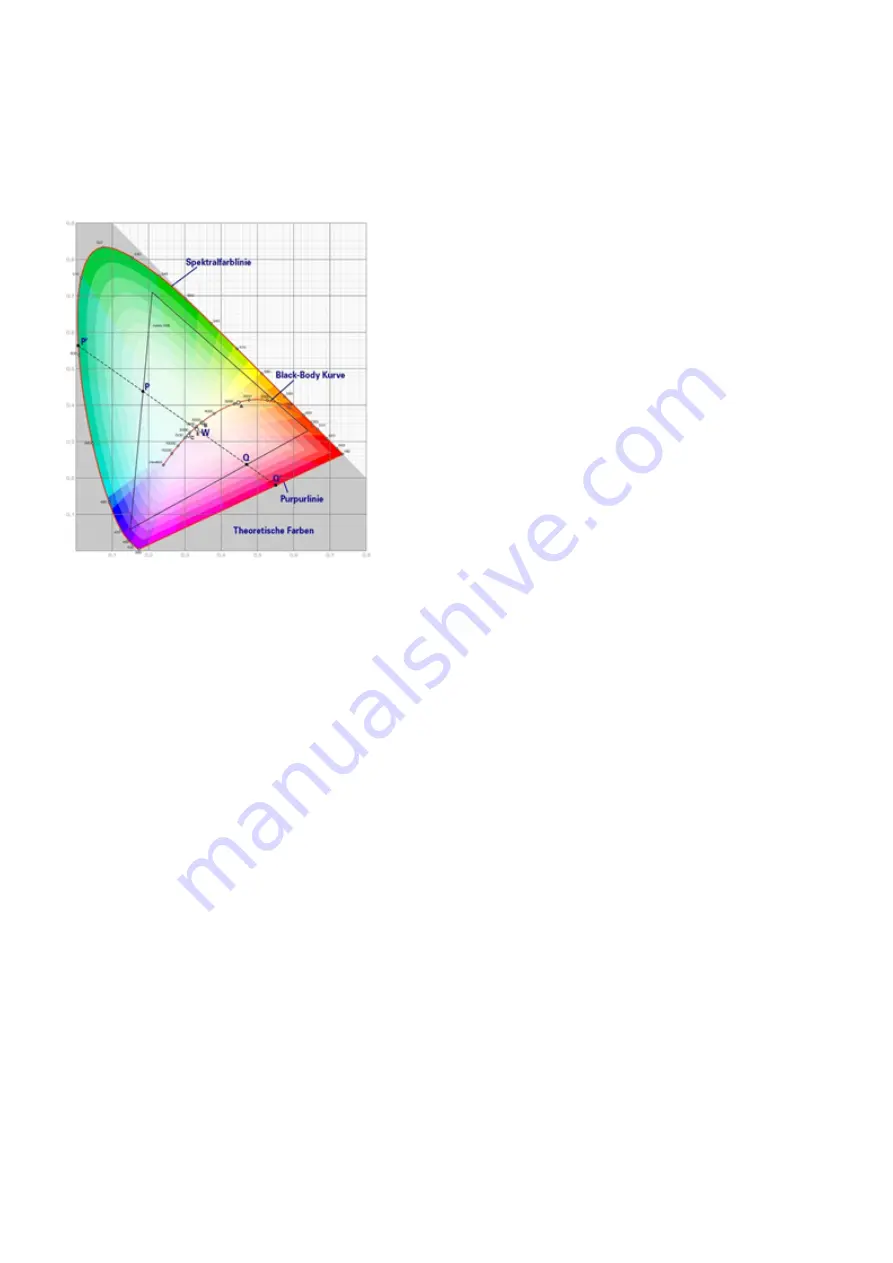
Technical Design-in Guide Engine LLE G2 PRE KIT | 03-2020 | 1.2 | en
Optical Aspects
c
37 / 63
6.7.1. Chromaticity coordinate
LEDs exhibit variations in terms of their exact shade of colour. This means that different “white” LEDs will all shine in a colour that is
within the white colour spectrum. But the colours won’t be exactly the same.
These colour differences between LEDs are problematic in areas where the lighting must produce a specified and uniform colour and
deviations from that can impair the visual appearance of an installation. Using the chromaticity coordinate helps to avoid such
problems by defining the exact shade of colour of an LED.
Technically speaking, the chromaticity coordinate is defined by its three coordinates (x, y, z) within the so called CIE 1931 colour space
chromaticity diagram.
The CIE 1931 colour space chromaticity diagram represents all the colours that are discernible for humans. Since the three coordinates
sum up to 1, two coordinates are sufficient to define a colour and so one one coordinate is sometimes left out.
6.7.2. Colour temperature and Black Body Curve
The Black Body Curve within the colour space chromaticity diagram represents the colours that show when a so-called "black body" is
slowly heated.
A "black body" is an "idealised" body which absorbs all light and has no reflected radiation.
If a "black body radiator" is slowly heated, it passes through a colour scale from dark red, red, orange, yellow, white to light blue. The
definition for the colour temperature of a light source is the temperature where the “black body radiator” shows the same colour.
The colour temperature is measured in Kelvin (K). The most common luminaires have colour temperatures below 3,300 Kelvin (warm
white), between 3,300 and 5,300 Kelvin (neutral white) or above 5,300 Kelvin (daylight white).
















































